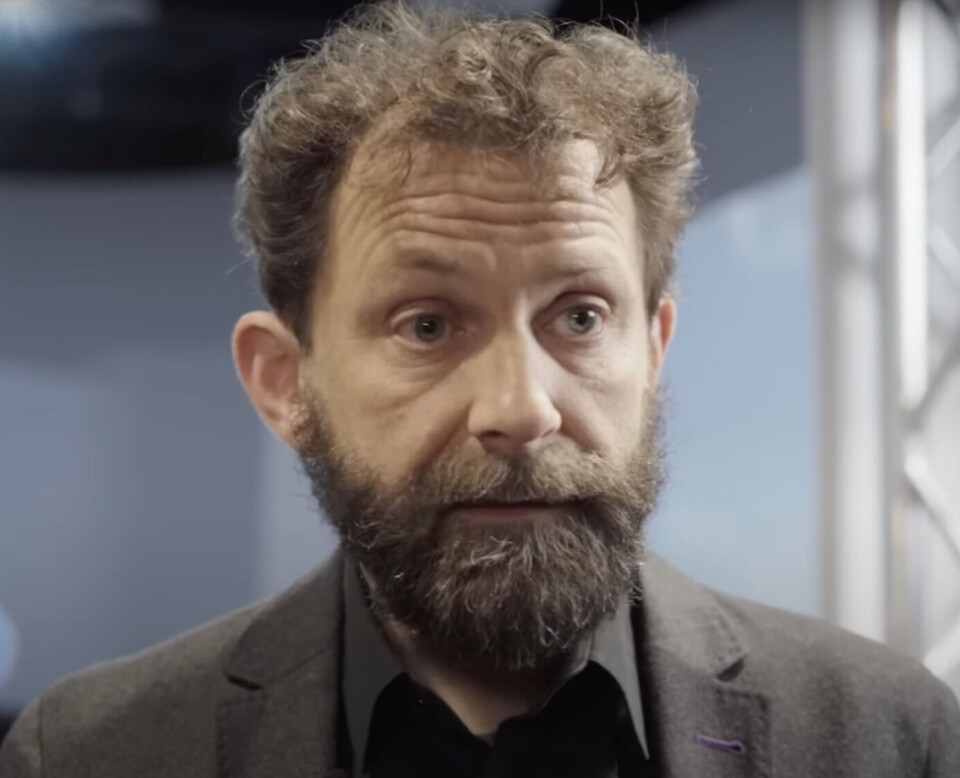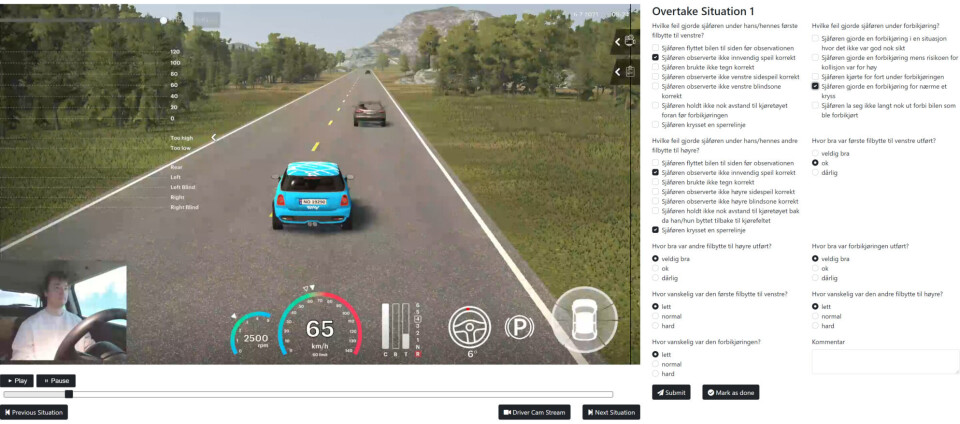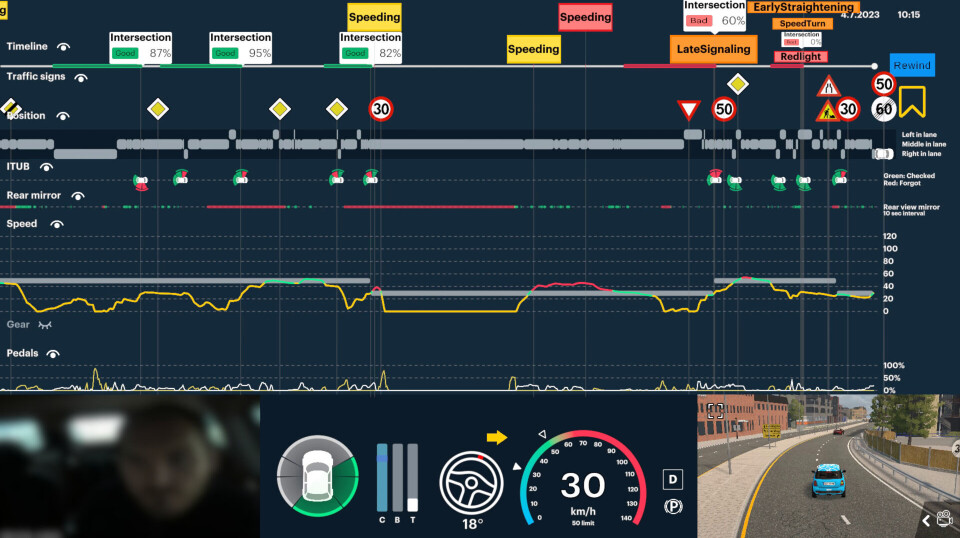THIS CONTENT IS BROUGHT TO YOU BY NTNU Norwegian University of Science and Technology - read more

Could a digital driving instructor offer the same quality as a human, but at a lower cost?
Training in a full-scale driving simulator can contribute to safer drivers.
Artificial intelligence (AI) has the potential to completely transform current driver training. This is also the aim of a collaboration between NTNU, the IT company Virtur, and WAY AS, which is Norway’s only simulator-based driving school.
The project has developed a system and an AI driving instructor that can teach students how to drive using a full-scale car simulator.
Neutral instructor, personal training
A virtual driving instructor is fully capable of immediately assessing the performance of the student behind the wheel. It can also provide completely neutral feedback in real time.

This helps eliminate or reduce any personal biases towards the learner that might influence feedback given by a human instructor in a one-on-one situation.
“AI driving instructors are on par with human driving instructors when it comes to systematically evaluating learner drivers,” says Odd Erik Gundersen.
He is a researcher at NTNU’s Department of Computer Science.
1.2 million people die in road traffic accidents every year
Nearly 1.2 million people die in road traffic accidents every year, according to the World Health Organization. This is the most common cause of death for children and young people between the ages of 5 and 29.
The youngest drivers are most at risk, and men are three times more likely than women to be killed in road traffic accidents.
Even small improvements can save many lives.
While the UN aims to halve the number of road traffic deaths by 2030, the EU wants the number to be as close to zero as possible by 2050.
In Norway, 118 people died in traffic accidents in 2023. This trend over past two years has gone in the wrong direction, so Norwegian authorities are also intensifying their efforts to improve traffic safety.
477 training scenarios
One possible improvement is better driver instruction, according to NTNU researchers.
The system they have developed is based on 477 driving scenarios involving three different traffic situations – overtaking manoeuvres, city driving with major intersections and roundabouts, and various right-of-way situations.

The goal has been to train the system, that is, the virtual instructor, to accurately and objectively assess various driving scenarios.
At the same time, it was intended to have skills and provide feedback as precise as those given by real driving training experts.
To train and test the virtual instructor against real-world training, a total of 21 students and seven instructors participated in simulator sessions.
Machine and human – equally precise
This is stated by the researchers in the scientific article from the study:
'The results show that the assessments and feedback from the AI instructor align very well with those of the real experts in these situations. This confirms that the system can perform as precisely as human experts.'
In recent years, interest in simulator-based driver training with virtual instructors has grown in line with increasingly better technology and cheaper hardware.
However, despite the many advantages, relatively little research has been done on AI-based driver training so far. Much of the attention in the field is instead directed towards the development of self-driving cars.
Practicing for unexpected situations
Odd Erik Gundersen hopes that their research can help advance the development of virtual driver training.
“When training in a simulator, it's easier to standardise and personalise driver learning. At the same time, the simulator can ensure that all drivers are exposed to and can handle different situations," he says.
Additionally, unusual and dangerous situations which cannot be tested in the real world can be practiced in a simulator.
Changing the environment as needed
Furthermore, the virtual environment around the driver can be changed as needed. Everything from complex traffic situations in big cities to driving on country roads can be tailored to the individual student.

The AI driving instructor can, for instance, select situations that the learner driver needs extra practice on. Since stress generally reduces our ability to learn, it is also possible to remove traffic or other stressors along the way.
The researchers have also shown that the feedback from the instructor can be tailored to a learning style that best suits the student.
Cheaper driving lessons?
The researchers emphasise that many of these improvements cannot be implemented in current driving lessons where the learner is behind the steering wheel and the instructor in the passenger seat.
They also believe that fully automated training could make driving lessons cheaper.
The development of these types of computer models is based on comprehensive and complex programming work. The system developed by NTNU researchers, driving instructors, and IT professionals consists of an assessment system and a guidance system. The former is largely designed as a rule-based system, where AI uses predetermined rules to make decisions.
Machines explain and justify
This approach differs from pure machine learning, which requires models to be fed with vast amounts of data in order to be trained to act as desired.
The virtual driving instructor requires a rule-based system, where it is easy to find support and explanations for the decisions it makes.

This is because it is not just supposed to assess the learner’s driving performance. It also needs to explain and justify good or bad feedback and provide information about what the student needs to improve.
Just as good as a human instructor
Traffic light junctions, roundabouts, and overtaking manoeuvres – these are the most challenging situations for those learning to drive.
The assessments made by the system show a very strong correlation with the assessments made by professional driving instructors. The AI driving instructor is just as accurate as a human instructor in identifying and providing feedback on both good and the bad decisions made by the student.
Time and money
'There are limitations. As with any rule-based system, our platform also faces some demanding challenges,' the researchers note in their article.
These challenges include the complicated process of developing and managing a comprehensive and intricate set of rules that identify the many different situations a driver encounters in traffic.
This complexity means that developing and maintaining the system can be both time-consuming and costly.
Introducing mixed reality
The 21 students in the project each completed three test runs. They sat in a standard-equipped car, using the usual steering wheel and pedals.
However, instead of driving on the road with other traffic, the car is mounted on a moving platform surrounded by projectors that display a virtual traffic environment. A camera captured everything the students did, even tracking their eye movements during the driving lesson.
The project partners want to make the system even better by incorporating the latest virtual and mixed reality (MR) technology.
MR is an emerging technology where users wear headsets equipped with advanced eye-tracking technology, blending virtual reality (VR) and augmented reality (AR).

Regulations hinder AI driving instructors
The researchers believe this technology will facilitate even more personalised, efficient, and tailored training for each individual. For instance, someone who needs practice with roundabouts could complete 30 attempts in 30 minutes.
They believe their work highlights the enormous potential AI has to revolutionise driver training, going so far as to call it a paradigm shift.
But how long will it be before digital driving instructors can be integrated into Norwegian driving school cars?
“Norwegian regulations state that driver training must be conducted in a car – meaning it cannot be done in a simulator. So, if the use of digital driving instructors changes how the training is actually done, the regulations must be changed,” says Gundersen.
References:
Bjørnland et al. A Virtual Driving Instructor That Generates Personalized Driving Lessons Based on Student Skill Level, Proceedings of the AAAI Conference on Artificial Intelligence, vol. 38, 2024. DOI: 10.1609/aaai.v38i21.30320
Rehm et al. A virtual driving instructor that assesses driving performance on par with human experts, Expert Systems with Applications, vol. 248, 2024. DOI: 10.1016/j.eswa.2024.123355
———
Read the Norwegian version of this article on forskning.no
More content from NTNU:
-
Why are pregnant women in Norway so worried?
-
Politics on Facebook: Populist parties choose divisive issues on purpose
-
Social media is connected to cyberbullying – but not how we thought
-
Forskere ved NTNU får nesten 24 millioner av EU for å lage nye strømomformere
-
This helps the youngest children enjoy school more
-
Can we tap the ocean’s power to capture carbon?





































